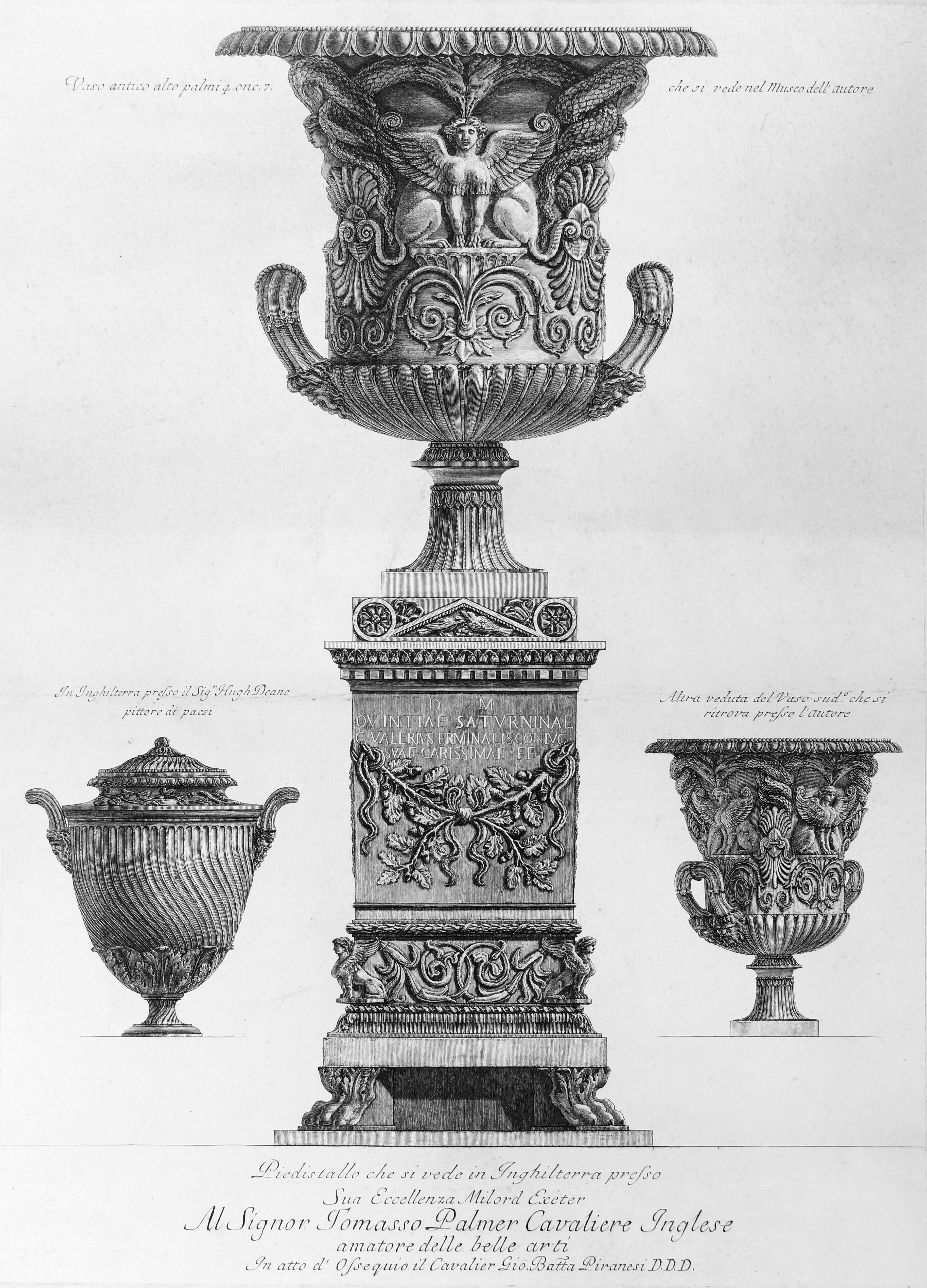

He developed an interest towards classical architecture, assimilating in particular the depiction of ruins from the engravings of Marco Ricci (1676-1730). Battista Piranesi (17201778), from the Santa Barbara Museum of Arts. He spent his formative years between his native Venice, working as an apprenticed architect and scenographer, and Rome, learning his first technical rudiments of etchings as a topographical engraver. Battista Piranesi reveal the architecture of his ambitious imagination. The whimsical nature of the Carceri has been explained through Piranesi's education as a stage designer. Not every interior allows for large Francesco Piranesi prints and multiples, so small editions measuring 18.1299991607666 inches across are available. You can also browse by medium to find art by Francesco Piranesi in paper, laid paper, engraving and more. In these paradoxical and irrational spatial constructions, gothic arches are supported by piers disposed in the same plane, staircases incongruently intersect other architectural elements, focal points multiply while repeated forms increase the ambiguity of the space. 1stDibs offers a wide variety of authentic Francesco Piranesi prints and multiples for sale. All giovanni battista piranesi artwork ships within 48 hours and includes a 30-day money-back guarantee. The impossible spaces produced by the fantasy of the artist deliberately defy any rule of architecture. Cantor To Present Only West-Coast Viewing Of Final Works By Giovanni Battista Piranesi - Los Gatos, CA - 'Piranesis Paestum: Master Drawings Uncovered' - Aug. Shop for giovanni battista piranesi wall art from the worlds greatest living artists. The inventiveness of the architecture is the result of Piranesi's own interpretation of his imaginary dreamlike prison. Yet the vastness of the space represented has little to do with the confined and claustrophobic chambers of an eighteenth-century prison. These elements gave the composition certain elements of prison imagery.
#Piranesi art series#
He created this cluttered composition, enriching it with a series of instruments of torture, 'many of them infused with a sense of decay through endless use.' In 1761, Piranesi perfected this series of prints after 15 years during which he substantially reworked the plates and added two more. Not conceived for strict commercial purposes - as suggested by the absence of any indication of the authorship on the frontispiece and on most of the plate - the etchings provided an outlet for Piranesi's fervent imagination. Piranesi saw his imaginative structures as a way to argue for the superiority of ancient Rome over all other architectural eras and restore Rome to its former glory.First appearing around 1745, the Carceri (the Prisons) was regarded as a private and highly experimental work. I need to produce great ideas, the artist once stated.

Famed for his Neoclassical etchings, Piranesi used ancient Greek and Roman ruins as inspiration to create macabre dungeon scenes filled with elaborate contraptions.

Piranesi did not draw entirely from the caprices of his imagination, however, but often manipulated real landscapes, represented unreal structures based on existing architecture, or drew from his experience with set design in the theater. (Italian, 17201778) Events Giovanni Battista Piranesi was an Italian draftsman, printmaker, and architect. The awe-inspiring nature of Piranesi’s sublime structures aided in attracting travelers to the Grand Tour, a pilgrimage to see famous classical antiquities in person popular among 18th-century European intellectuals. Trained in Venice in architecture and engineering, Piranesi was a pioneer in archaeology, and through the wide dissemination of his prints, he became one of the most influential architects, designers, and printmakers of the 18th century. Through fantastical sweeping vistas and soaring spaces, Piranesi sought to create an affective experience that would strike awe and admiration into antiquarians and intellectuals around Europe. Giovanni Battista Piranesi (1720-78), was a Venetian architect who went to Rome in 1740 and became the recorder of Roman antiquities in hundreds of etchings. The San José Museum of Art (SJMA) is a modern and contemporary art museum in downtown San Jose, California, United States. Piranesi, a printmaker, architect, and antiquarian, produced thousands of printed books and participated in archaeological excavations. Piranesi: Architecture of the Imagination, a selection of etchings by Venetian-born printmaker Giovanni Battista Piranesi (1720–1778), from the Santa Barbara Museum of Art’s collection is currently on view in the Ridley-Tree Gallery.


 0 kommentar(er)
0 kommentar(er)
